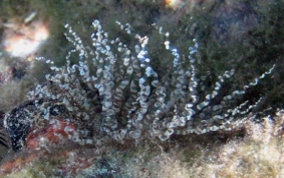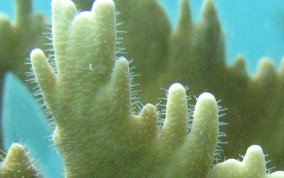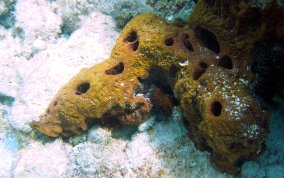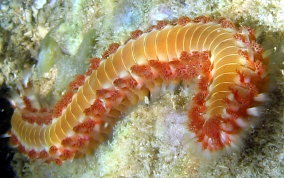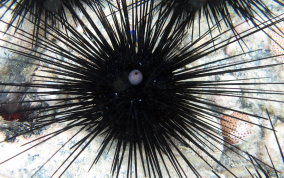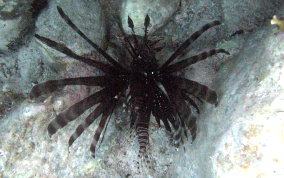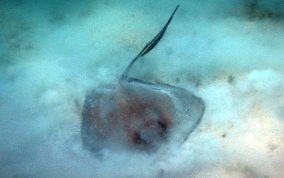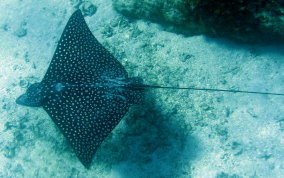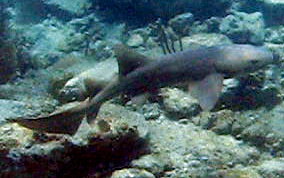Volcano / Fire Sponge
Inhabit turtle grass beds
and attach to mangrove
roots. Contact with bare
skin can cause severe
allergic reaction that can
include pain, redness,
swelling and rash that can
last for three to seven
days. Soak in vinegar and
sprinkle with meat
tenderizer to relieve the
symptoms. Apply
hydrocortisone ointment.
When disturbed
the worm extends white bristles
from each body segment. These
can easily penetrate the skin
and cause a severe burning
sensation and wound. You can use some
sort of adhesive tape or duct-tape to
remove the bristles and use vinegar or
rubbing alcohol to alleviate some of the pain.
SEA URCHINS
Sea Urchins are everywhere.
If you are in the water
often enough, chances are
some part of your body
will get urchin
spines in it. The
initial sting is short lived. The site
of the penetration looks worse than it really is.
Any entrance point
will turn white with a black
center. DO NOT TRY AND
REMOVE THE SPINES. They are
exceedingly brittle.
Soak area with warm vinegar
4 times a day. The spines
will dissolve after a few
days. I take Benadryl to
control any itchiness.
Unfortunately, this
invader has reached the
Virgin Islands. Efforts are
underway to limit
the damage this
invasive species will do.
Females can lay
15,000 eggs every several
days. It can ingest food
that is 3/4 is own size. With very few
natural predators, there's
nothing to stop this species.
Our entire reef ecosystem is
in danger of collapse. The
Lionfish is also toxic.
Venom from their fin rays can
cause vomiting, fever and
sweating ,and has been lethal
in a few cases.
We ask that whenever you
are in the water, take a
lionfish marker with you. If
you see a Lionfish, drop the
marker at
location. Then report the
sighting to one of the dive
shops or email to
nolionfishstj@yahoo.com
